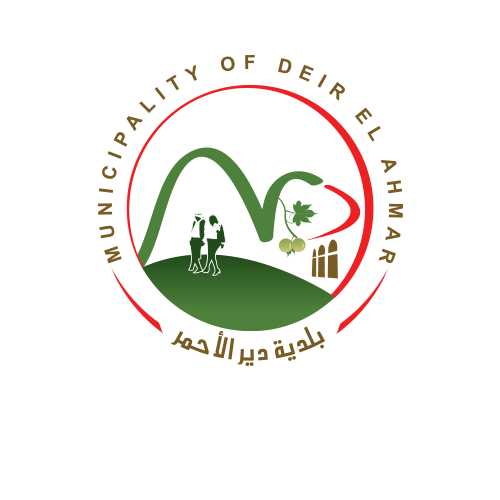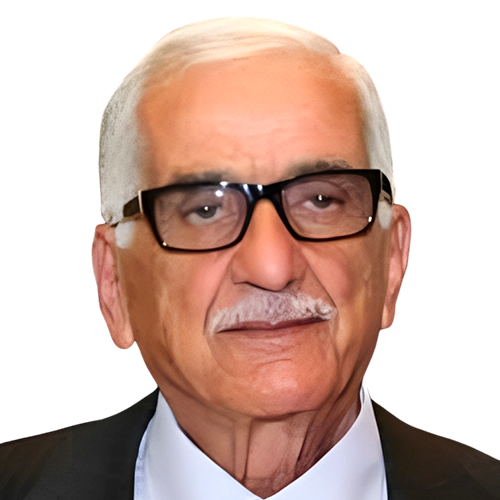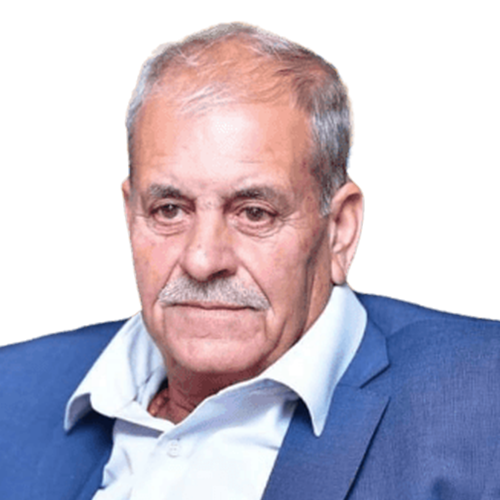
Deir El Ahmar Municipality
In the town of Deir El Ahmar, one of the major towns in the region, the French mandate established a municipal council in 1924, consisting of a mayor and three members. In 1936, the French mandate held the first municipal elections in the town, increasing the number of council members to six. During the era of General Fuad Chehab, new election laws were introduced, raising the number of Deir El Ahmar's municipal council members to 12. In 1998, the number of council members increased to fifteen. Then, in 2004, the Ministry of Interior Affairs raised the number to eighteen, only to reduce it to fifteen in 2016.
The mayoral position of Deir El Ahmar was alternately held by:
| Latif Mansour Kozah | 2016 - till present |
| Miled Fawzi Akoury | 2010 - 2016 |
| Khalil Hanna Kozah | 2004 - 2010 |
| Khalil Hanna Kozah | 1998 - 2004 |
|
Hanna Youssef Khoury Mkhayel Merched Imad |
1983 - 1998 |
| Rachid Khalil Chit | 1963 - 1983 |
| Mahrous Salim Fakhry | 1952 - 1963 |
|
Hanna Youssef Khoury Georges Rachid Chwah Nabih Amin Fakhry |
1940 - 1952 |
| Mahrous Salim Fakhry | 1936 |
|
Youssed Assad Fakhry Najib Makhoul Chwah |
1929 |
| Melhem Afandi Kozah | 1924 |
Mukhtars:
Since the rule of the Harafsha until 1998, the town was administered by a number of mukhtars, and in 1998 Deir El Ahmar had three mukhtars who were elected directly by the people.
In 2004, their number increased to four, and in 2016 the Ministry of Interior increased the number of town mayors to five.
| Ibrahim Hanna Khoury - Charbel Botros Keirouz - Samir Rachid Habchy - Hekmat Yaacoub Fakhry - Akl Khalil Jreich | 2016 - till present |
| Ibrahim Hanna Khoury - Samir Rachid Habchy - Massoud Khoury - Hekmat Yaacoub Fakhry | 2010 - 2016 |
| Ibrahim Hanna Khoury - Hanna Tannous Habchy - Samir Rachid Habchy - Tanios Khalil Habchy | 2004 - 2010 |
| Ibrahim Hanna Khoury - Sami Farid Khoury - Mkhayel Hanna Fakhry | 1998 - 2004 |
| Issa El Hajj - Hanna Imad - Hanna Chwah - Youssef Chwah - Hanna Ghasibe Keirouz - Tannous Saad Keirouz - Botros Naddaf - Chehade Chwah - Geryes Khalil Trad (Al Maldoun) - Tannous Naddaf - Elias Gerges Naddaf Fakhry - Najib Chwah - Ghasibe Keirouz - Fares Imad - Hanna Naddaf - Mahrous Salim Fakhry - Georges Chwah - Hanna Youssef Ibrahim Khoury - Geryes Lichaa - Serhan Dib - Toufic Massoud Habchy - Nabih Fakhry - Ibrahim Hanna Khalil Khoury | Before 1998 |
Reference: The book “The History of the Maronites in Deir al-Ahmar and its Region” - written by Issam Farid Karam
-
 from Monday to Friday (8:00 a.m - 2:00 p.m)
from Monday to Friday (8:00 a.m - 2:00 p.m)
-
 Municipality Street
Municipality Street
Municipal Productivity
Members

Latif Kozah
President

Sami Habchy
Vice President

Joseph Berkachy
Member

Mansour Lichaa
Member

Maroun Chit Dirany
Member

Rimond Saade
Member

Samir Dib
Member

Maroun Lichaa El Khoury
Member

Marwan Hadchity
Member

Anwar Habchy
Member

Tannous Habka
Member

Nohra Abou Younes
Member

Hany Bou Raffoul
Member - Deceased
General infos
Deir El Ahmar is a Lebanese village located in the Baalbeck District within the Baalbeck-Hermel Governorate. It is situated at an elevation ranging from approximately 1000 meters (in the plain) to 1450 meters (in Al Mchaytiyah). The village has a population of around 11,000 residents and approximately 8,000 registered voters according to the National Register. It covers an area of 42 square kilometers, with agricultural land spanning about 17 square kilometers.
Geographically, its boundaries extend from the area of Iaat in the southeast, westward to Chlifa and Btedhi, reaching Al Yamouneh and the lands of Ainata to the north. It then continues along the borders of the lands of Zarazir and Bechwat to the east, all the way to the borders of the lands of Knaiseh and Maqneh.
The Deir region is renowned for its diverse agriculture, particularly high-quality grapevines used for winemaking. It also produces good-quality tobacco. The area is characterized by a considerable number of rare trees such as the Pistachio tree, in addition to vast expanses of oak and pine forests.
The region has held significant importance since ancient times, serving as a crucial link between the governorates of the Bekaa and the North, as well as between Baalbeck and the cities of Bsharri and the seaport of Tripoli.
The climate:
The climate of Deir El Ahmar is moderate in autumn, icy in winter, dry in spring and hot in summer.
Roads:
The most important roads leading to Deir El Ahmar:
• Baabda - Dahr Al-Baidar - Zahle - Deir El Ahmar
• Jounieh - Ouyoun Al-Siman - Hadath Baalbeck - Deir El Ahmar (Closed in the winter)
• Bcharre - Al-Arz - Ainata Al Arz - Deir El-Ahmar (closed for the winter)










